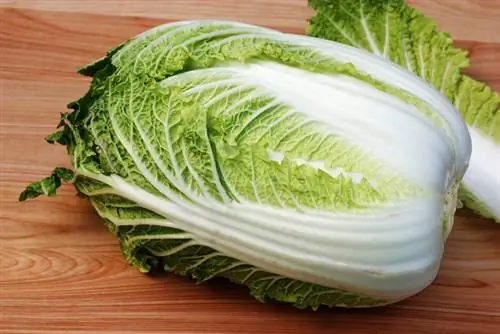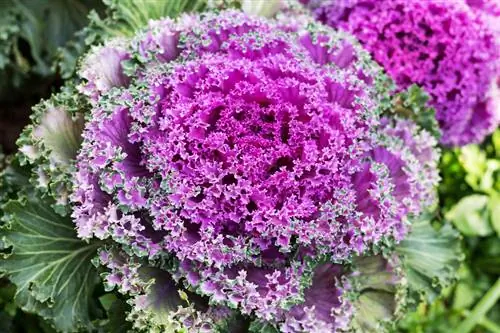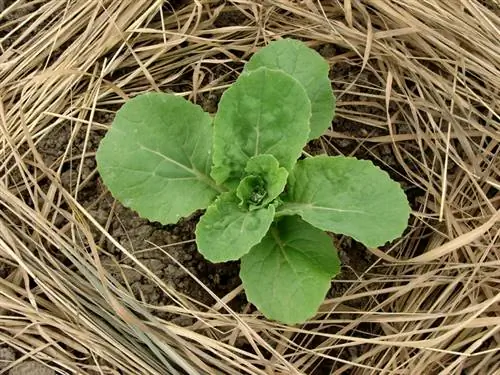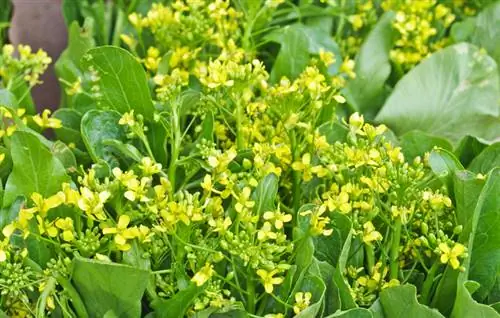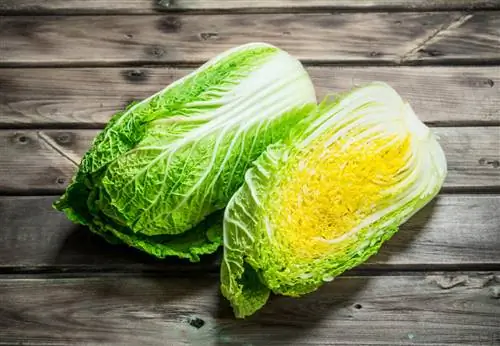- Author admin [email protected].
- Public 2023-12-16 16:46.
- Last modified 2025-01-23 11:20.
As with almost all vegetable plants, there are different types of Chinese cabbage. However, in Europe usually only one variety is grown. Find out below what it is and what characteristics define it.
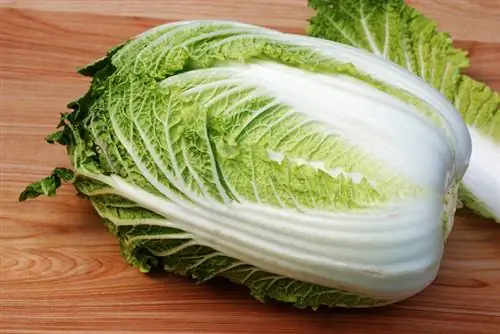
Which types of Chinese cabbage are grown in Europe?
In Europe, the Chinese cabbage variety Lung Nga Paak is mainly grown, but there are varieties such as Autumn Fun F 1, Green Rocket F 1, Osiris F 1, Parkin F 1 and Richi F 1. They differ slightly in Shape, taste, susceptibility to pests and shelf life.
Chinese cabbage, as the name suggests, comes from China. It only came to Europe in the 20th century and is now grown in Europe primarily in Germany, Switzerland, Austria, Italy, the Netherlands and Spain.
The Chinese cabbage in profile
- Genus: Cabbage (Brassica)
- Family: Cruciferous vegetables (Brassicales)
- Botanical name: Brassica rapa subsp. Pekinensis
- Common names: Japanese cabbage, Peking cabbage, celery cabbage, leafy cabbage, cooking salad
- Origin: China
- Breeding: Cross between pak choi and turnip
- Growth habit: solid body that tapers cylindrically
- Leaves: fleshy, crunchy, yellow-green with curled leaf edges
- Flowers: thumbnail-sized, lemon-yellow flowers, usually with four petals
- Season: Available in stores all year round as a vegetable, in the garden in late summer/autumn
- Location: sunny and warm, humus-rich, loose, nutrient-rich soil
- Sowing: Usually from mid-July
- Harvest: two to three months after sowing, usually from September
- Storage: stored in the refrigerator for up to ten days
- Use: as a crop, boiled, cooked, fried, raw or fermented
Two types of Chinese cabbage in China
In China there are two types of Chinese cabbage: Baak Choi (white vegetable) and Lung Nga Paak (white dragon's tooth), which is similar to celery. The variety available from us and grown in Europe comes from Nga Paak. As with most vegetable plants, there are numerous varieties of Chinese cabbage that vary slightly in shape and taste:
- Autumn Fun F 1: dark green outer leaves
- Grenn Rocket F 1: not very susceptible to pests
- Osiris F 1: less susceptible to pests, dark green leaves, can be stored for a long time
- Parkin F 1: less susceptible to pests and diseases, very productive
- Richi F 1: is sown early, cannot be stored
Chinese cabbage: delicious and he althy
Chinese cabbage is milder and easier to digest compared to other types of cabbage. It is also full of nutrients, including:
- Calcium: 29mg
- Iron: 0.74mg
- Magnesium: 8mg
- Phosphorus: 19mg
- Potassium: 87mg
- Sodium: 11mg
- Vitamin C: 3, 2mg
- Vitamin A: 263IU
per 100 grams of cooked Chinese cabbage. Chinese cabbage is also said to help prevent cancer, promote digestion and strengthen the immune system. Unlike other types of cabbage, it does not cause flatulence.

